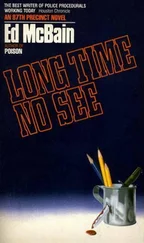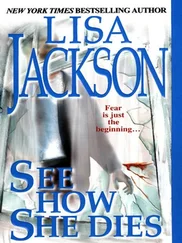Ed McBain - Sadie When She Died
Здесь есть возможность читать онлайн «Ed McBain - Sadie When She Died» весь текст электронной книги совершенно бесплатно (целиком полную версию без сокращений). В некоторых случаях можно слушать аудио, скачать через торрент в формате fb2 и присутствует краткое содержание. Жанр: Полицейский детектив, на английском языке. Описание произведения, (предисловие) а так же отзывы посетителей доступны на портале библиотеки ЛибКат.
- Название:Sadie When She Died
- Автор:
- Жанр:
- Год:неизвестен
- ISBN:нет данных
- Рейтинг книги:4 / 5. Голосов: 1
-
Избранное:Добавить в избранное
- Отзывы:
-
Ваша оценка:
- 80
- 1
- 2
- 3
- 4
- 5
Sadie When She Died: краткое содержание, описание и аннотация
Предлагаем к чтению аннотацию, описание, краткое содержание или предисловие (зависит от того, что написал сам автор книги «Sadie When She Died»). Если вы не нашли необходимую информацию о книге — напишите в комментариях, мы постараемся отыскать её.
Sadie When She Died — читать онлайн бесплатно полную книгу (весь текст) целиком
Ниже представлен текст книги, разбитый по страницам. Система сохранения места последней прочитанной страницы, позволяет с удобством читать онлайн бесплатно книгу «Sadie When She Died», без необходимости каждый раз заново искать на чём Вы остановились. Поставьте закладку, и сможете в любой момент перейти на страницу, на которой закончили чтение.
Интервал:
Закладка:
“It’s still a hell of a long drop,” Kling said.
“Looks even longer from down here.”
“Where do you suppose he’d have landed?”
“Right about where we’re standing. Maybe a foot or so over,” Carella said, and looked at the ground.
“See anything?” Kling asked.
“No. I was just trying to figure something.”
“What?”
“Let’s say he did land without breaking anything . . .”
“Well, he must’ve, Steve. Otherwise he’d still be laying here.”
“That’s just my point. Even if he didn’t break anything, I can’t believe he just got up and walked away, can you?” He looked up at the window again. “That’s got to be at least forty feet, Bert.”
“Gets longer every minute,” Kling said. “I still think it’s no more than thirty, give or take.”
“Even so. A guy drops thirty feet . . .”
“If he hung from the windowsill first, you’ve got to subtract maybe ten feet from that figure.”
“Okay, so what do we say? A twenty-foot drop?”
“Give or take.”
“Guy drops twenty feet to a concrete pavement, doesn’t break anything, gets up, dusts himself off, and runs the fifty-yard dash, right?” Carella shook his head. “My guess is he stayed right where he was for a while. To at least catch his breath.”
“So?”
“So did Fletcher look out the window?”
“Why would he?”
“If your wife is dead on the floor with a knife in her, and the window is broken, wouldn’t you naturally go to the window and look out? On the off chance you might spot the guy who killed her?”
“He was anxious to call the police,” Kling said.
“Why?”
“That’s natural, Steve. If the guy’s innocent, he’s anxious to keep in the clear. He calls the police, he stays in the apartment . . .”
“I still think he did it,” Carella said.
“Don’t make a federal case out of this,” Kling said. “I personally would like nothing better than to kick Mr. Fletcher in the balls, but let’s concentrate on finding the guy whose fingerprints we’ve got, okay?”
“Yeah,” Carella said.
“I mean, Steve, be reasonable. If a guy’s fingerprints are on the handle of a knife, and the knife is still in the goddamn victim . . .”
“ And if the victim’s husband realizes what a sweet setup he’s stumbled into,” Carella said, “wife laying on the floor with a knife in her, place broken into and burglarized, why not finish the job and hope the burglar will be blamed?”
“Sure,” Kling said. “Prove it.”
“I can’t,” Carella said. “Not until we catch the burglar.”
“All right, so let’s catch him. Where do you think he went after he dropped down here?”
“One of two ways,” Carella said. “Either through the door there into the basement of the building. Or over the fence there at the other end of the alley.”
“Which way would you go?”
“If I’d just dropped twenty feet or more, I’d go home to my mother and cry.”
“I’d head for the door of the building. If I’d just dropped twenty feet, I wouldn’t feel like climbing any fences.”
“Not with the terrible headache you’d probably have.”
The basement door suddenly opened. A red-faced patrolman was standing in the doorway with a .38 in his fist.
“All right, you guys, what’s going on here?” he said.
“Oh, great,” Carella said.
Anyway, Marshall Davies had already done the work.
So while Carella and Kling went through the tedious routine of proving to a cop that they were cops themselves, Davies called the 87th Precinct and asked to talk to the detective who was handling the Fletcher homicide. Since both detectives who were handling the homicide were at that moment out handling it, or trying to, Davies agreed to talk to Detective Meyer instead.
“What’ve you got?” Meyer asked.
“I think I’ve got some fairly interesting information about the suspect.”
“Will I need a pencil?” Meyer asked.
“I don’t think so. How much do you know about the case?”
“I’ve been filled in.”
“Then you know there were latent prints all over the apartment.”
“Yes. We’ve got the I.S. running a check on them now.”
“Maybe you’ll get lucky.”
“Maybe,” Meyer said.
“Do you also know there were footprints in the kitchen?”
“No, I didn’t know that.”
“Yes, a very good one in the sink, probably left there when he climbed through the window, and some middling-fair ones tracking across the kitchen floor to the dining room. I got some excellent pictures, and some very good blowups of the heel—for comparison purposes if the need arises later on.”
“Good,” Meyer said.
“But more important,” Davies said, “I got a good walking picture from the footprints on the floor, and I think we can assume it was the man’s usual gait, neither dawdling nor hurried.”
“How can you tell that?” Meyer asked.
“Well, if a man is walking slowly, the distance between his footprints is usually about twenty-seven inches. If he’s running, his footprints will be about forty inches apart. Thirty-five inches apart is the average for fast walking.”
“How far apart were the prints you got?”
“Thirty-two inches. He was moving quickly, but he wasn’t in a desperate hurry. The walking line, incidentally, was normal and not broken.”
“What does that mean?”
“Well, draw an imaginary line in the direction the suspect was walking, and that line should normally run along the inner edge of the heelprints. Fat people and pregnant ladies will often leave a broken walking line because they walk with their feet spread wider apart . . . to keep their balance.”
“But this walking line was normal,” Meyer said.
“Right,” Davies said.
“So our man is neither fat nor pregnant.”
“Right. Incidentally, it is a man. The size and type of the shoe, and also the angle of the foot indicate that clearly.”
“Okay, fine,” Meyer said. He did not thus far consider Davies’ information valuable nor even terribly important. They had automatically assumed that anyone burglarizing an apartment would be a man and not a woman. Moreover, according to Carella’s report on the size of the footprint in the sink, it had definitely been left by a man—unless a female Russian wrestler was loose in the precinct. Meyer yawned.
“Anyway, none of this is valuable nor even terribly important,” Davies said, “until we consider the rest of the data.”
“And what’s that?” Meyer asked.
“Well, as you know, the bedroom window was smashed, and the Homicide men at the scene . . .”
“Monoghan and Monroe?”
“Yes, were speculating that the suspect had jumped through the window into the alley below. I didn’t think it would hurt to go downstairs and see if I could get some meaningful pictures.”
“Did you get some meaningful pictures?”
“Yes, I got some pictures of where he must have landed—on both feet, incidentally—and I also got another walking picture and direction line. He moved toward the basement door and into the basement. That’s not the important thing, however.”
“What is the important thing?” Meyer asked patiently.
“Our man is injured. And I think badly.”
“How do you know?”
“The walking picture downstairs is entirely different from the one in the kitchen. The footprints are the same, of course, no question but that the same person left them. But the walking line indicates that the person was leaning quite heavily on the left leg and dragging the right. There are, in fact, no flat footprints for the right foot, only scrape marks where the edges of the sole and heel were pulled along the concrete. I would suggest that whoever’s handling the case put out a physician’s bulletin. If this guy hasn’t got a broken leg, I’ll eat the pictures I took.”
Читать дальшеИнтервал:
Закладка:
Похожие книги на «Sadie When She Died»
Представляем Вашему вниманию похожие книги на «Sadie When She Died» списком для выбора. Мы отобрали схожую по названию и смыслу литературу в надежде предоставить читателям больше вариантов отыскать новые, интересные, ещё непрочитанные произведения.
Обсуждение, отзывы о книге «Sadie When She Died» и просто собственные мнения читателей. Оставьте ваши комментарии, напишите, что Вы думаете о произведении, его смысле или главных героях. Укажите что конкретно понравилось, а что нет, и почему Вы так считаете.












